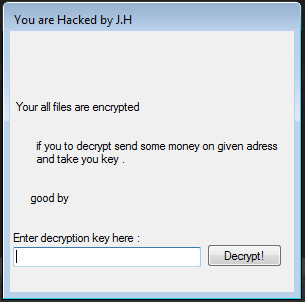RANSOM_STUPFAILED.A
Windows


Threat Type: Ransomware
Destructiveness: No
Encrypted: No
In the wild: Yes
OVERVIEW
Downloaded from the Internet, Dropped by other malware
This Ransomware arrives on a system as a file dropped by other malware or as a file downloaded unknowingly by users when visiting malicious sites.
TECHNICAL DETAILS
32,256 bytes
EXE
No
24 Apr 2017
Encrypts files
Arrival Details
This Ransomware arrives on a system as a file dropped by other malware or as a file downloaded unknowingly by users when visiting malicious sites.
Other Details
This Ransomware renames encrypted files using the following names:
- {Original File Name and Extension}.FailedAccess
It does the following:
- Encrypts files in C:\Users\houcemjouini\Desktop\projet sans fils\test
- Display the following after encryption:

SOLUTION
9.850
13.362.01
24 Apr 2017
13.363.00
25 Apr 2017
Step 1
Before doing any scans, Windows XP, Windows Vista, and Windows 7 users must disable System Restore to allow full scanning of their computers.
Step 2
Scan your computer with your Trend Micro product to delete files detected as RANSOM_STUPFAILED.A. If the detected files have already been cleaned, deleted, or quarantined by your Trend Micro product, no further step is required. You may opt to simply delete the quarantined files. Please check this Knowledge Base page for more information.
Step 3
Restore encrypted files from backup.
Did this description help? Tell us how we did.

